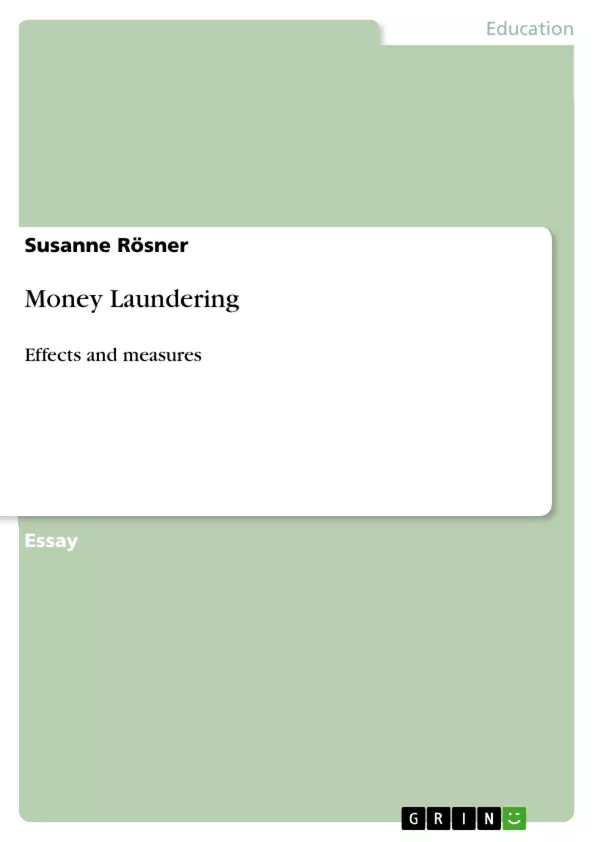This essay deals with the subject of money laundering, its effects and measures. It starts with a short summary of the presentation contents as a kind of introduction. The second section shows three methods combating money laundering. With the third section, legal measures against money laundering are presented. An outlook completes this essay.
Inhaltsverzeichnis (Table of Contents)
- Abstract
- Declaration of Authorship
- Table of contents
- 1.0 Summary of the presentation topics
- 2.0 Methods combating money laundering
- 2.1 "Know your customer" principle
- 2.2 Observation of accounts and transactions
- 2.3 Announcement of suspicious transactions
- 3.0 Legal measures against money laundering
- 4.0 Outlook
- References
- Footnotes
Zielsetzung und Themenschwerpunkte (Objectives and Key Themes)
This essay provides a comprehensive overview of money laundering, analyzing its effects and exploring various measures implemented to combat this complex issue. It begins with a concise summary of the presentation content, serving as a foundation for understanding the main themes. The essay then delves into the specific methods used to counter money laundering, focusing on the "know your customer" principle and the role of account and transaction observation. Additionally, it examines legal measures established to address this global problem. The final section provides a prospective outlook on the future of combating money laundering. Key themes explored in the essay include:- Definition and methods of money laundering
- The "know your customer" principle as a key anti-money laundering strategy
- The impact of money laundering on socio-economic factors, organized crime, and financial systems
- The importance of international cooperation and legal frameworks in combating money laundering
- Challenges and future considerations in preventing and mitigating the effects of money laundering
Zusammenfassung der Kapitel (Chapter Summaries)
1.0 Summary of the presentation topics
This chapter defines money laundering as the systematic concealment and obfuscation of property value through financial transactions. It highlights the primary objective of money laundering: to "clean" illicit funds for legal access and distribution. The chapter outlines the driving force behind money laundering as profit maximization and briefly introduces various reasons for engaging in such activities, including wealth hiding, prosecution avoidance, tax evasion, profit enhancement, and legitimization.2.0 Methods combating money laundering
This chapter delves into three distinct methods employed to counter money laundering. These methods aim to minimize or eliminate the negative effects of this illicit practice.2.1 "Know your customer" principle
This section focuses on the "know your customer" principle, a cornerstone of combating money laundering. It explains how the prohibition of anonymous financial transactions has given rise to this principle, highlighting the responsibility of banks, insurance companies, and legal professionals to identify their clients prior to engaging in any business activities. The concept of "control of identification" is introduced, emphasizing the importance of verifying client identities. The chapter also mentions the 2001 Basel Committee on Banking Supervision, which emphasized the bank's duty to exercise due diligence in the customer identification process.Schlüsselwörter (Keywords)
This essay focuses on the multifaceted issue of money laundering, exploring its effects and the various measures implemented to combat it. Key terms and concepts covered include money laundering, its definition and methods, anti-money laundering strategies, the "know your customer" principle, account observation, transaction monitoring, legal frameworks, international cooperation, and the impact of money laundering on economies, organized crime, and financial systems.
Fin de l'extrait de 12 pages
- haut de page
- Citation du texte
- Dipl.Betr.Wirtin, LL.M. Susanne Rösner (Auteur), 2009, Money Laundering, Munich, GRIN Verlag, https://www.grin.com/document/149624
Lire l'ebook



